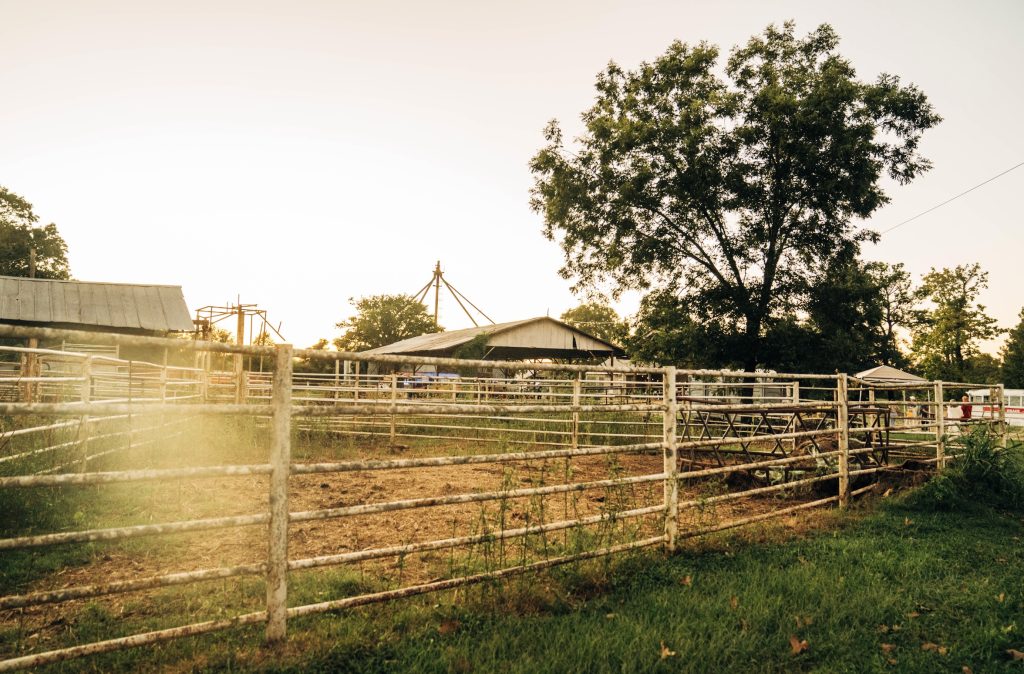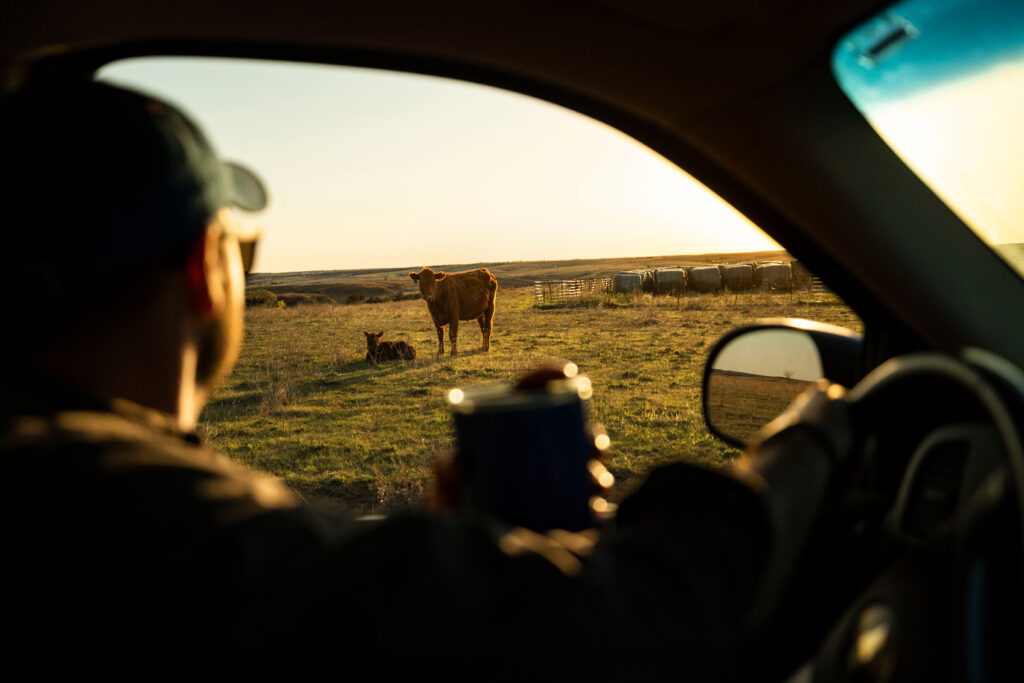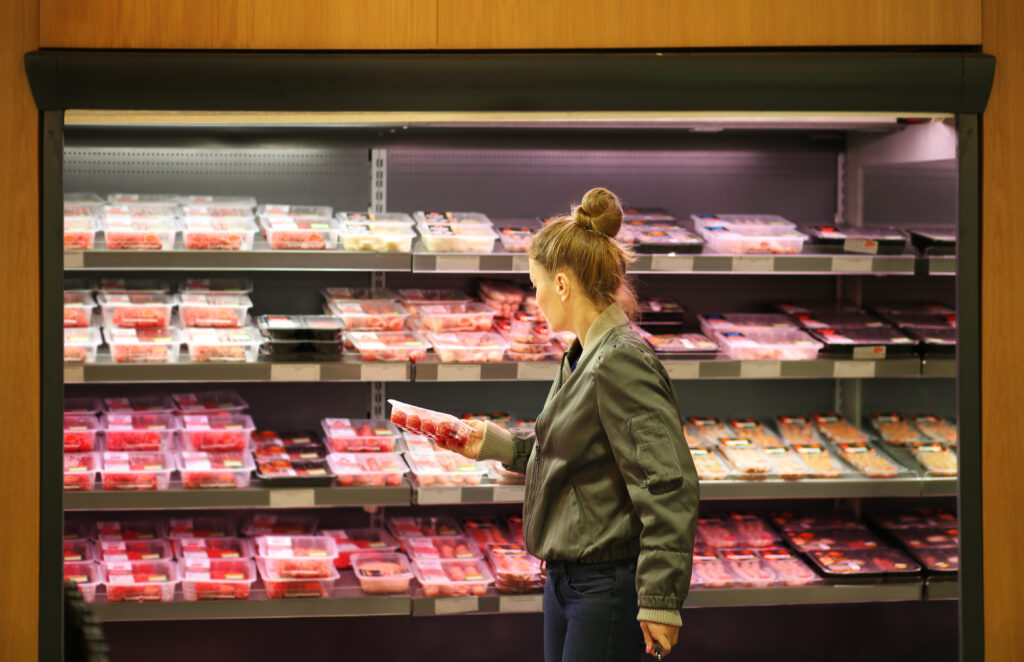In the U.S., a handful of multinational corporations dominate the meatpacking industry, while smaller independent processors often struggle to survive. The “Big Four” meatpackers — Tyson, Cargill, JBS, and National Beef — control 80-85% of the market.
Farm Action has called for increased support for small and midsize meatpacking plants, which expand opportunity and competition for farmers and ranchers who raise livestock.
In July 2021, President Joe Biden issued an executive order promoting competition in the U.S. economy, which included a $1 billion investment in expanding independent meat processing capacity. We followed up with two of the recipients of those funds to see how those meatpackers are faring now and what other supports could help ensure their longevity.
Consolidation of the Meatpacking Industry Threatens Our Food System’s Security
The largest meatpackers have been repeatedly caught abusing their outsized power over the market, threatening the security of our food system. The “Big Four” have been slapped with countless lawsuits in recent years; most recently, McDonald’s accused the meatpacking giants of price fixing. But, the lawsuits often amount to the equivalent of a slap on the wrist for these corporations. The “Big Four” also use supply chain disruptions, like a 2019 fire at a Tyson plant, as excuses for price hikes that ultimately allow them to reap excessive profits. The largest meatpackers use these excuses to pay farmers a lower price and charge consumers a higher price.
The concentrated meatpacking industry’s threat to our food system’s security was especially on display at the onset of the COVID-19 pandemic. Many workers who were forced to work in close quarters at large meatpacking plants became ill with the virus, and some plants slowed operations or shut down as a result. During this time, farmers had nowhere to have their meat processed, and grocery store shelves were nearly empty. Consumers paid a higher price for what product was available to offset losses for these multinational conglomerates. Local processors saw a boost in demand and were then trying to fill in the gaps, but many say demand has waned in the time since.
Biden’s executive order was aimed at addressing these issues caused by consolidation and empowering independent producers. As Investigate Midwest reports, independent meatpackers are capable of providing for their region, but they struggle to stay in business due to the dominant meatpackers’ tight grip on the market. Biden’s executive order brought some assistance for smaller, independent meatpackers, which face higher operating costs than the large meatpackers while lacking access to market opportunities.
USDA Invests in Independent Meatpackers
As part of the government’s $1 billion investment, the USDA has allocated $325 million to over 70 processors to help them expand processing capacity through the Meat and Poultry Processing Expansion Program. Recipients applied for funding for everything from building a brand-new facility to purchasing new equipment or increasing cold storage.
R&C PACKING, INC.
R&C Packing Inc. in Bidwell, Ohio, aimed to use the funds to build an entirely new facility with a processing plant, barn, cold storage space, and a retail area. R&C, which has been open since 2004, received a little over $1 million grant to expand capacity in the first wave of recipients. Founder Jamie Graham said he hasn’t been able to carry out the project due to materials price increases.
“Our cost almost tripled from 2019…when we initially got estimates,” Graham said. “We went from right around a $3.5 million project to a $10 million project. So, although the funds were very substantial, we are obviously very thankful for them. The cost has just been so astronomical. We’re trying to figure out how we can reallocate, reuse the funds, or do we need to downsize our project?”
Graham said he and his wife initially opened R&C Packing to support the local food movement but found they were ahead of their time — and now process meat for nearby ranchers while shipping regionally and nationwide.
Graham said they want to focus more on their local consumers, which was part of the capacity expansion. But, he said it’s not possible for R&C (which has about 20 employees) to compete with the large meatpackers who have hundreds of employees at a multi-million dollar plant.
“We can’t turn the amount of volume to keep our prices, processing costs, and product costs highly competitive with larger packers just because they can produce more pounds per hour than what we can,” he said.
Graham said because his facility also processes multiple types of meat (pork, beef, and lamb) R&C Packing cannot compete with the prices of a meatpacking plant that focuses on just one type of meat. The biggest gap in the system, he says, is funding. Independent meatpackers face high overhead costs that make it impossible to price competitively without pricing themselves out of the market.

R&C Packing Inc.
Graham said what keeps him in the business is being able to provide meat that’s raised by ranchers in a way that he aligns with and having complete control of the processing to ensure customers receive a premium product.
“That’s what makes you get up in the morning because there are people depending on you… that you’re providing something to people that you know a lot of other people can’t, and doing it in a manner that they choose you over others. You know, that’s the fun part,” Graham said.
We'll herd updates like these right into your inbox.
Get the biweekly Farm Action News Roundup!
HOME PLACE PASTURES
Home Place Pastures founder Marshall Bartlett was able to complete his expansion project but now needs the demand and market opportunity to match. Home Place Pastures in Como, Mississippi, received a $508,784 grant to increase cold storage and processing. The plant processes pasture-raised beef and pastured pork on a 5th-generation farm, which Bartlett transitioned from a row crop farm to a regenerative livestock farm.
“We put together a cool project that I’m really proud of. We were able to build a separate cold storage facility attached to the existing plant and stay in full operation, and then we transitioned all of our warehousing and cold storage over to that new facility and rehabbed the original building to use the former storage areas for added production space,” Bartlett explained.
Bartlett said the project would not have been possible without the USDA grant paired with a state grant that covered 50% of the project. He said it was a “shockingly expensive project,” but the grants pushed the decision to move forward with the project “over the edge.” The project, he believes, quadrupled their throughput capacity, but now they need to increase their sales in tandem.
At the time of the grants and project planning, there was a high demand for local meat products, but Bartlett said conditions have changed now.
“Suddenly, debt is around 9%, cattle prices are at historic highs, and demand for private label processing has fallen because producers are getting more money than they could ever imagine at the sale barn. Domestic live cattle prices and, therefore, our beef prices are through the roof,” he said. “People start to kind of gravitate back to the industry and all the guys that they turned away from during COVID because money is tight. The industry can relieve live cattle pricing pressure with cheap imports. We cannot.”
Home Place Pastures does regional distribution through food service distributors, restaurant wholesale, e-commerce sales to consumers, and they run an on-farm restaurant and butcher shop with roughly 25 employees total. Home Place also has a contract with a university and public school dining system.
Bartlett said he is focused on growing the direct-to-consumer side of the business now to bypass the grocery store, which independent processors often lack access to.

Home Place Pastures Founder
Marshall Bartlett
Home Place Pastures has been growing to what it is today for the last decade and has been welcomed and encouraged by its rural community, Bartlett says, but they still face hurdles.
Bartlett said he doesn’t want to continue asking for more, but the current situation for local regenerative producers is daunting without the government creating market opportunities.
He said it’d be especially helpful if the government could incentivize or compensate schools or other institutions with immense purchasing power for purchasing locally.
“I think ‘local’ is the key, right? Because there’s all these buzz words and label claims…but if the business is rooted in a certain place, they employ people in that place, and they are in that community, and it’s within, you know, 200 or 300 miles of the school… and there’s some kind of way to verify that they’re sourcing from producers that are within that mile radius. That would be really helpful.”
He said while those are not the highest margin sales, they are high volume — and the volume is a key piece of running infrastructure like this.
Additionally, Bartlett said the misuse of labels is extremely damaging to producers like him. While the Product of U.S.A. labeling crackdown was a win, Bartlett said there’s more work to be done on labeling, like with claims of “grass-fed beef.”
“When the stuff at the grocery store that’s owned by international conglomerates is made to resemble exactly what we’re doing out here, and it’s half the price,” Bartlett said. “I think that’s been very damning to everything that we’re trying to do.”
“When the demand and the opportunity were there, everyone was trying to scale up or get the infrastructure, and then it takes a couple of years to get the money and put the plans together and complete the projects. Then, in two years, we’ve had a full swing in market conditions. And I think a lot of these plants have closed already or are not doing well,” Bartlett said. “It’s a really challenging business to get into, so I’m proud that we’re doing it and continuing to grow, but it’s certainly a challenging time for everybody in the space.”

Home Place Pastures product
Some of the recipients of these funds have already closed down in the time since. Pure Prairie Poultry in Charles City, Iowa, made headlines as it filed for bankruptcy, devastating poultry farmers and leading to the euthanization of over a million birds that farmers could no longer afford to feed. On a smaller scale, South 40 Beef, a processor in Mott, North Dakota, also closed down.
The Path Forward
As both Graham and Bartlett said, cost often stands in the way of allowing independent meatpackers to compete with the main industry players. While Bartlett said he does not want to reach the level of those corporations, he does want to find ways to secure market opportunities and get his product into more local spaces. An incentive, like Bartlett said, whether that’s through tax breaks or credits for those with institutional purchasing power to support independent, local meatpackers, could be an option.
“You want to make good, healthy food accessible to a poor, rural community that has a tremendous amount of health problems and systemic lack of access to resources, but you can’t because your product is more expensive, you immediately price out all the people in the community who need it,” said Bartlett.
In addition to changes to labeling requirements, both processors believe consumer education would be helpful: an understanding of the importance of what a local, independent meatpacker is producing in comparison to what a multinational corporation offers.
“The value of food in rural communities is often benchmarked at whatever that commodity product is sold for at Walmart. Consumers see that, and they’re like, ‘This is what this is worth,’” Bartlett said. “That’s an artificially cheap price that has all kinds of sinister things contributing to it that are totally misunderstood or not understood at all.”
Farm Action has said that the government’s investments are empty without further action. Investments must be paired with stronger antitrust enforcement, the reform of the Packers and Stockyards Act of 1921 (which is now up in the air), and government procurement to create initial market opportunities for these smaller, independent processors.
There is a future possible where independent producers can provide for their communities, but it will require government action to disrupt the current status quo.
Written by Emma Nicolas; edited by Jessica Cusworth and Christian Lovell; concept developed by Joe Maxwell.




